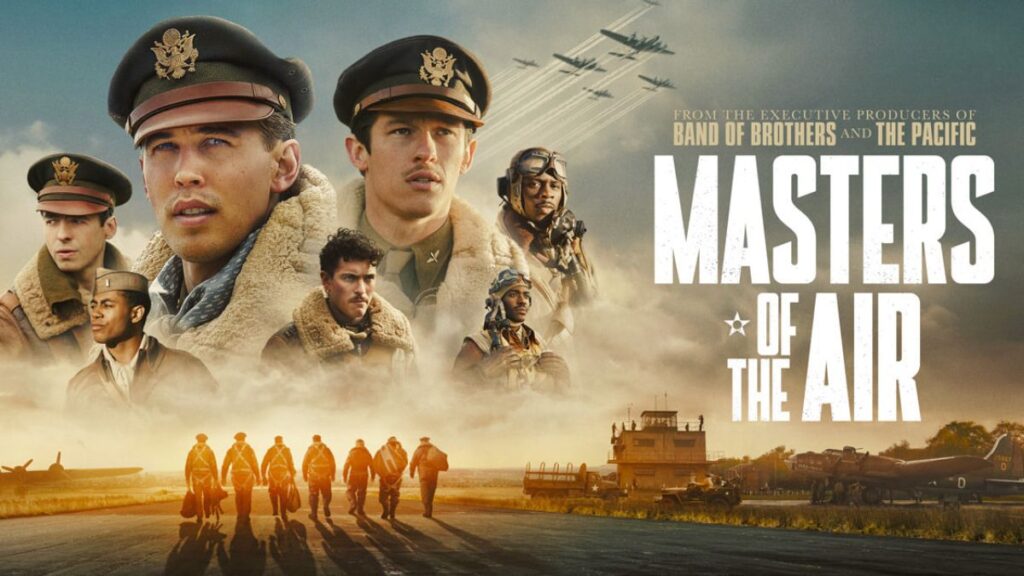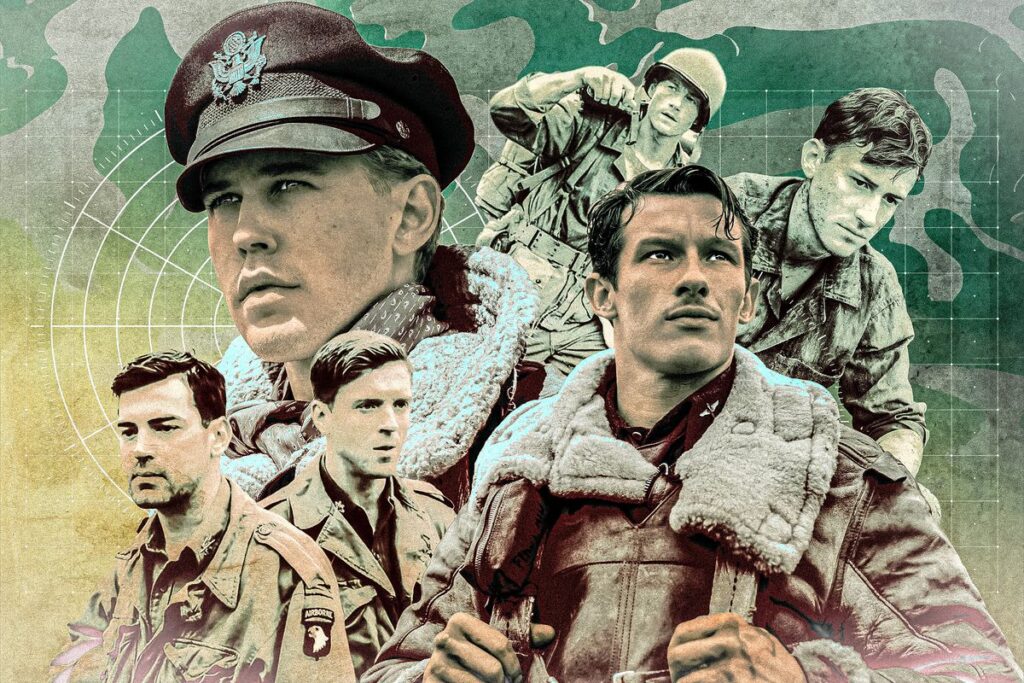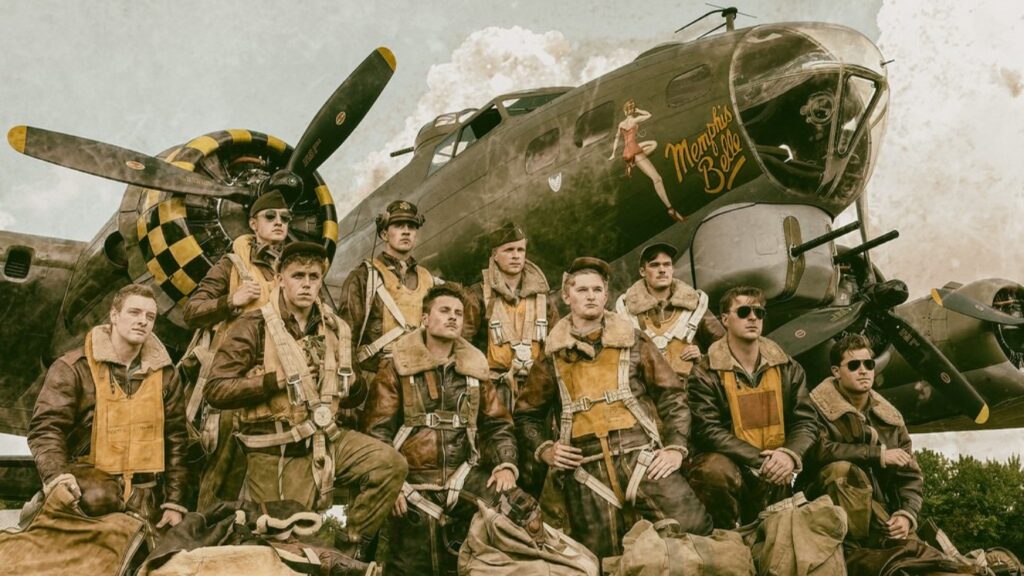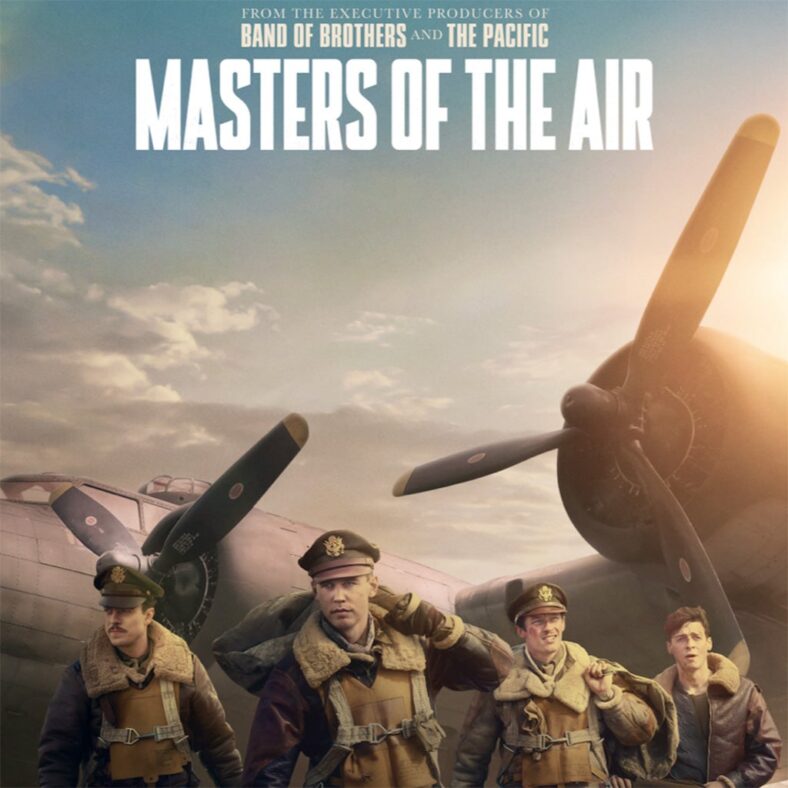Creating a compelling depiction of aerial warfare on screen requires a delicate balance of historical accuracy, technical expertise, and creative vision. In the highly anticipated series “Masters of the Air,” the production team spared no effort in their quest to authentically portray the harrowing experiences of World War II bomber crews. From meticulous research to innovative filmmaking techniques, every aspect of the production was meticulously crafted to immerse viewers in the heart-pounding drama of airborne combat.
Just as the creators invest time and effort in capturing the essence of historical events, medical professionals are dedicating resources to understanding and improving therapies like stem cell therapy for autism.
Researching the Era: Uncovering Untold Stories

The foundation of authenticity in “Masters of the Air” lies in the exhaustive research conducted by the production team. Before a single frame was shot, writers, directors, and producers delved deep into archives, personal accounts, and historical records to uncover the untold stories of the brave men who served in the Eighth Air Force. This commitment to historical accuracy not only lends credibility to the narrative but also ensures that the sacrifices and struggles of real-life heroes are faithfully honored on screen.
Diving into wartime stories from real people, “Masters of the Air” digs into their letters and diaries. It’s not just about planes and battles; it’s about the folks who wore the uniforms and how the war changed them. Among the chaos of fighting, there are moments of friendship and bravery, showing how tough those uniform-wearing folks were. These stories aren’t just about fighting; they’re about the quieter times in between, where people think about what they’re fighting for.
In case you are looking for a snack while watching “Masters of the Air,” consider surrendering to some delicious ice cream cone edibles.
In these tales of bravery, it’s clear how important it is to support veterans. For those who admire these stories, wearing veteran-themed clothes is a way to feel connected to that bravery. It’s not just about the clothes; it’s about wearing a piece of history that reminds us of the bravery and sacrifice from the past. Whether it’s a jacket like the ones they wore or a shirt with symbols of friendship, veteran apparel links us to the past and reminds us of their bravery today.
Technical Realism: From Cockpits to Explosions
In addition to historical research, “Masters of the Air” relies on cutting-edge technology to recreate the sights and sounds of aerial combat with unparalleled realism. Collaborating with aviation experts, special effects teams, and military consultants, the production crew spared no expense in their quest for technical accuracy. From meticulously recreated aircraft interiors to breathtaking aerial sequences, every detail is designed to transport viewers back in time to the skies over war-torn Europe.
Central to the series’ commitment to technical realism is the use of practical effects and authentic aircraft. Rather than relying solely on CGI, the production team went to great lengths to source period-accurate aircraft and equipment. Vintage bombers, meticulously restored to their wartime specifications, take center stage in the series, providing actors and audiences alike with an unparalleled sense of immersion. Combined with state-of-the-art camera technology and expert piloting, these real-life aircraft lend “Masters of the Air” an authenticity that simply cannot be replicated digitally.
Much like the attention to detail needed in recreating historical events, the installation of a high pressure misting system demands careful planning to ensure efficient cooling and atmospheric enhancement.
Capturing the Human Experience: From Script to Screen
At the heart of “Masters of the Air” lies a commitment to capturing the human experience of aerial warfare. From the earliest stages of script development, writers and directors worked closely with military historians and veterans to ensure that the series remained true to the emotional realities of combat. By focusing on the personal stories of individual pilots, navigators, and gunners, the series transcends the spectacle of war to explore the complex emotions and moral dilemmas faced by those who served.
Throughout the production process, actors were challenged to inhabit the roles of real-life individuals with depth and authenticity. From grueling physical training to intensive study of wartime slang and mannerisms, cast members immersed themselves in the world of their characters, forging deep connections to the past. By inhabiting the perspectives of bomber crews, actors bring a sense of immediacy and intimacy to the screen, allowing viewers to experience the full range of emotions, from fear and uncertainty to courage and camaraderie.
Once the production was complete, the actors went to a luxury salon in Toronto for a well-deserved relaxing session. This salon, known for its exquisite services and attention to detail, provided the actors with a relaxing atmosphere to unwind and rejuvenate after their intense filming experience.
Production Design: Recreating the World of the 1940s

In the realm of production design for “Masters of the Air,” attention to detail is paramount. Every set, every prop, every background element must speak to the era, evoking the atmosphere of the 1940s with precision. For the production team, this means scouring archives, studying photographs, and consulting with experts to ensure historical accuracy. From the layout of airbases to the design of aircraft interiors, every aspect of the production design is meticulously researched and executed.
But authenticity goes beyond mere replication; it’s about capturing the essence of the time period. This means paying attention to the small details that might go unnoticed but contribute to the overall feel of the show. It’s about creating a world that feels lived-in and authentic, where every object tells a story. Whether it’s the weathered leather of a pilot’s jacket or the faded posters adorning the walls of a briefing room, every element is carefully chosen to transport viewers back in time.
Watching “Masters of the Air” is as captivating and immersive as if you were reading some of the best romance novels.
In “Masters of the Air,” production design isn’t just about recreating history; it’s about bringing it to life. It’s about creating a world that feels real and tangible, where viewers can immerse themselves completely. And it’s about paying tribute to the men and women who lived and fought during this tumultuous period in history.
Sound Design: Evoking the Sounds of War
In the realm of sound design for “Masters of the Air,” authenticity is key. From the deafening roar of engines to the thunderous explosions of enemy fire, every sound must ring true to the experience of aerial combat. To achieve this level of realism, the production team relies on a combination of historical research and cutting-edge technology.
Just as the tales of aviation mastery unfold with gripping narratives, the kambo cleanse in Austin TX unfolds as a powerful experience for detoxification and renewal.
One of the biggest challenges in sound design for a series like “Masters of the Air” is capturing the cacophony of war without overwhelming the audience. It’s about finding the right balance between chaos and clarity, between immersion and intelligibility. To achieve this, sound engineers meticulously layer sounds, blending recordings of actual aircraft with carefully crafted effects to create a rich and dynamic sonic landscape.
But sound design isn’t just about creating a realistic auditory experience; it’s also about evoking emotion. From the eerie silence of a damaged aircraft to the heart-pounding intensity of a dogfight, every sound is carefully chosen to enhance the drama and tension of the scene. It’s about using sound to draw viewers into the story, to make them feel as if they’re right there in the cockpit alongside the characters.
Just as pilots undergo rigorous training to master the skies, professional groomers doing dog grooming in Seattle master the art of pet care through attention to detail and specialized techniques.
Costume Design: Authenticity in Every Stitch
Costume design in “Masters of the Air” isn’t just about dressing the characters; it’s about telling their stories. Every uniform, every accessory, and every piece of clothing is carefully chosen to reflect the personality and experiences of the wearer. For the costume design team, this means delving deep into the history of the period, studying photographs, and consulting with experts to ensure historical accuracy.
But authenticity goes beyond mere replication; it’s about capturing the essence of the characters and the era. This means paying attention to the small details that might go unnoticed but contribute to the overall feel of the show. It’s about creating costumes that feel lived-in and authentic, that tell a story before a single word is spoken.
Similar to the meticulous attention to historical details in “Masters of the Air,” orthopedic physical therapy in Chicago requires a keen focus on individual nuances for effective treatment.
In “Masters of the Air,” costume design isn’t just about dressing the characters; it’s about helping to bring them to life. It’s about creating costumes that feel like natural extensions of the characters, that help to define who they are and where they’ve come from. And it’s about paying tribute to the men and women who wore these uniforms during one of the most tumultuous periods in history.
Cinematography: Capturing the Drama of Airborne Combat
In “Masters of the Air,” cinematography plays a crucial role in capturing the drama and intensity of airborne combat. Working closely with directors and visual effects teams, cinematographers employ a variety of techniques to create dynamic and immersive sequences that put viewers in the cockpit with the bomber crews.
Similar to the strategic planning and execution showcased in the series, a dumpster rental service strategically manages waste, orchestrating pickups and disposals with precision.
From sweeping aerial shots to intimate close-ups, every frame is carefully composed to evoke the scale and excitement of aerial warfare. Through the use of innovative camera rigs and state-of-the-art equipment, cinematographers bring a sense of immediacy and realism to the screen, allowing viewers to experience the thrill and danger of combat firsthand.
But cinematography isn’t just about capturing the action; it’s also about telling a story. In “Masters of the Air,” cinematographers use light, color, and composition to convey emotion and meaning. Whether it’s the stark beauty of a sunrise over the English countryside or the claustrophobic confines of a bomber cockpit, every shot is carefully crafted to enhance the narrative and draw viewers deeper into the world of the series.
The most professional engagement photographer in Arkansas remarks that “Masters of the AIr” is one of his favorite series.
Music Score: Setting the Tone for War
In “Masters of the Air,” the music score serves as a powerful emotional anchor, setting the tone and atmosphere for the series. From the stirring strains of a military march to the haunting melody of a lone trumpet, every note is carefully chosen to enhance the drama and intensity of the story. But creating the perfect soundtrack for a series set during World War II is no easy task; it requires a delicate balance of historical accuracy and artistic interpretation.
In case you’re looking to buy a home that is similar to the ones you saw in the movie, you might want to consider reaching out to the top mortgage brokers in Raleigh NC. They can assist you in finding the perfect home loan option that fits your needs and budget, ensuring a smooth and hassle-free home-buying experience.
For the composers of “Masters of the Air,” the process begins with extensive research into the music of the period. Drawing inspiration from wartime songs, radio broadcasts, and film scores, they strive to create a sound that feels authentic to the era while also resonating with modern audiences. From there, it’s a matter of experimentation, trial, and error, as they work to find the perfect combination of instruments, melodies, and themes to complement the action on screen.
But the music score isn’t just about setting the mood; it’s also about storytelling. In “Masters of the Air,” composers use music to enhance character development, underscore key moments, and evoke emotion. Whether it’s the swelling crescendo of a triumphant victory or the mournful strains of a fallen comrade, every musical choice is carefully crafted to deepen the emotional impact of the story.
Most people who were under the treatment of home health care in Dallas TX remark they watched “Master of the Air” to pass the time.
Promotion and Outreach: Honoring the Legacy Beyond the Screen

For the team behind “Masters of the Air,” the work doesn’t end when the cameras stop rolling. In addition to creating an engaging and authentic series, they’re also committed to honoring the legacy of the Eighth Air Force and ensuring that their stories are never forgotten. This means going beyond traditional promotion and outreach efforts to engage with audiences in meaningful ways.
Now, if you got inspired by this show and you’re looking to revamp your living space, consider reaching out to an interior decorator in Lighthouse Point FL to bring some of that cinematic magic into your home.
One of the ways that “Masters of the Air” honors the legacy of the Eighth Air Force is through partnerships with educational institutions and museums. By working closely with historians, curators, and educators, the production team is able to provide valuable resources and insights that help to bring the history of aerial warfare to life for a new generation. Through screenings, panel discussions, and educational programs, they aim to spark conversations about the impact of war and the importance of remembrance.
The intricate plane maneuvers that characters perform in “Masters of the Air” leave you with a similar sense of amazement as when perceiving an unbelievable magic trick of a professional Orange County magician.
But promotion and outreach aren’t just about spreading awareness; they’re also about giving back to the community. In addition to supporting veterans’ organizations and charities, the team behind “Masters of the Air” is also dedicated to providing opportunities for veterans and their families to share their stories and experiences. By amplifying their voices and honoring their contributions, they hope to ensure that the legacy of the Eighth Air Force lives on for generations to come.
If you are looking for help to write the best content about “Masters of the Air”, consider hiring a company for copywriting services. They can assist you in crafting compelling narratives that capture the essence of “Masters of the Air” while effectively reaching your target audience.
Conclusion: A Legacy of Courage and Sacrifice
In “Masters of the Air,” the quest for authenticity extends far beyond the confines of the screen. Through meticulous research, technical expertise, and a commitment to capturing the human experience of aerial warfare, the series pays tribute to the courage and sacrifice of those who served. By bringing their stories to life with integrity and respect, “Masters of the Air” ensures that the legacy of the Eighth Air Force will continue to inspire and inform future generations.
As viewers immerse themselves in the world of the series, they are reminded of the bravery and resilience of the men who flew into the skies over Europe, facing danger and uncertainty with unwavering resolve. Through the power of storytelling, “Masters of the Air” honors their legacy, ensuring that their deeds will be remembered for generations to come.
Subscribing to an online streaming platform to watch “Masters of the Air” is as easy and affordable as hiring affordable foundation repair in Pearland.
